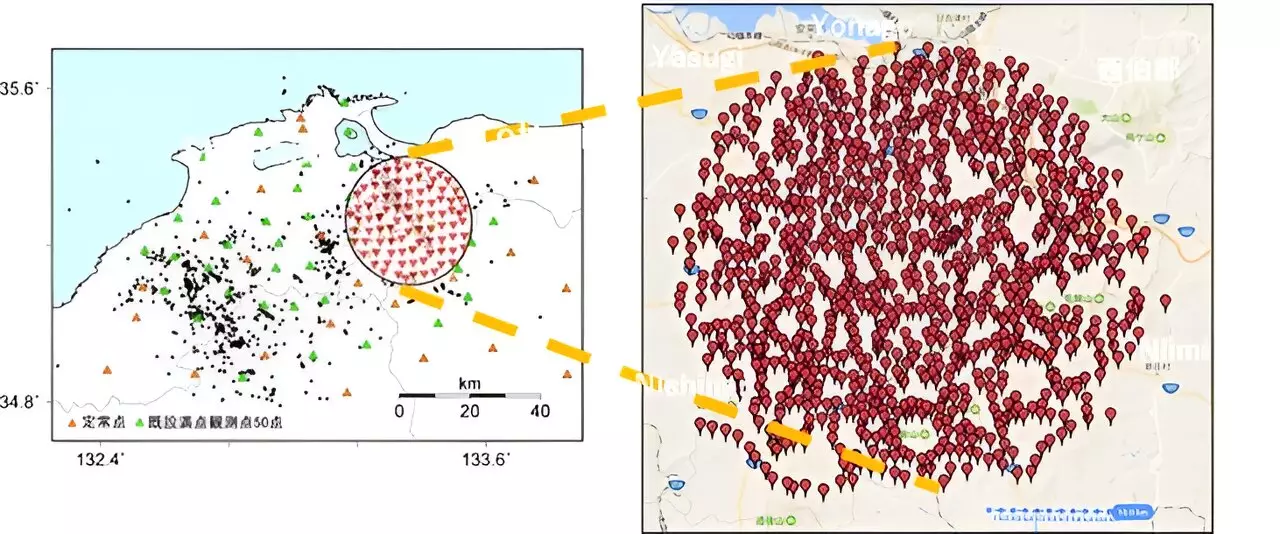Japan, renowned for its rich culture and technological advancements, is also infamous for its vulnerability to earthquakes. Situated on the Pacific Ring of Fire, the country experiences numerous seismic events annually, with small tremors occurring as frequently as every few minutes. This phenomenon raises essential questions about the mechanisms driving these disturbances, especially the possibility of predicting when a significant earthquake might strike. Recent advancements in seismology, particularly a new study emerging from Kyushu University and the University of Tokyo, shed light on this intricate relationship between fault strength and earthquake magnitude.
Despite decades of research, predicting seismic activity remains an elusive quest. Scientists strive to understand not just the occurrence of tremors but also the complex processes that may give rise to catastrophic seismic events. In Japan, the unpredictability of major earthquakes looms in the background, inciting a continuous pursuit of knowledge that aims to decipher the underlying geological forces at play. The new research, published in the prestigious journal *Nature Communications*, is a significant leap in this long-standing quest, as it aims to connect fault strength with the frequency and magnitude of earthquakes through a nuanced examination of seismic data.
Deciphering the b-value
The cornerstone of this research is the b-value, a statistical parameter utilized in seismology, which outlines the relationship between the size of earthquakes and their frequency. Professors and researchers, including Satoshi Matsumoto, play a crucial role in articulating how variations in the b-value can serve as an indicator for potential seismic risks. A low b-value suggests a higher likelihood of large earthquakes, while a higher b-value points to smaller tremors. Traditionally, seismologists observed a decrease in b-values in the lead-up to major earthquakes, attributing this to increasing stress on geological faults. However, this latest research posits that fault strength, in conjunction with stress, might significantly influence b-value fluctuations.
Unprecedented Research Methods
The researchers concentrated their efforts on the region affected by the Western Tottori Earthquake of 2000, which recorded a magnitude of 7.3. Utilizing a network of over 1,000 seismic stations, they gathered an extensive dataset capturing even the minutest of tremors. This technological advancement enabled them to probe deeper into the Earth’s crust, providing unparalleled insights into the orientation and activity of various faults. By analyzing these data, the research team delineated the stress fields impacting each fault, allowing them to categorize these geological structures into strong and weak variants.
Matsumoto’s findings reveal that under certain stress conditions, faults oriented favorably tend to slip, whereas those subjected to unfavorable stress exhibit greater resilience. This differentiation signifies that strong faults necessitate considerable stress to trigger movement, contributing to their lower b-values, which correlate with a greater potential for significant seismic events. Conversely, weak faults display a propensity to slip under lower stress conditions, leading to a higher b-value and suggesting a reduced likelihood of major earthquakes.
The ramifications of this research extend beyond academic interest; they influence disaster preparedness and risk mitigation strategies in earthquake-prone regions. Matsumoto underscores the notion that while absolute prediction of earthquakes remains unlikely, a combination of variables—including fault orientation and strength—could enhance the ability to assess when a fault might be nearing a critical threshold. This insight provides a directional framework for future research aimed at improving earthquake readiness in Japan and beyond.
While it may take decades to refine these findings into practical applications, advancing our understanding of the dynamic relationship between fault strength and b-value represents a critical stride towards a more predictive seismology. The critical examination of seismic phenomena not only emphasizes Japan’s unique geological challenges but also reflects the resilience and innovation of its scientific community, striving to carve out a safer future in the face of natural disasters.
The Road Ahead
As researchers delve deeper into this complex topic, the ultimate goal is clear: to inch closer to reliable earthquake predictions that could one day save lives. While we may not achieve complete precision in forecasting seismic events, the ongoing analysis of fault strength, stress conditions, and b-values holds great promise for improving societal resilience against earthquakes. Japan’s journey through its seismic challenges serves as a beacon of hope and a testament to the power of human inquiry and advancement in the realm of natural disaster prediction.

